Showing Spotlights 17 - 24 of 34 in category All (newest first):
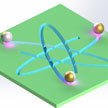 The complexity and high cost of the state-of-the-art high-resolution lithographic systems are prompting unconventional routes for nanoscale manufacturing. Inspired by natural nanomachines, synthetic nanorobots have recently demonstrated remarkable performance and functionality. Nanoengineers now have invented a new nano-patterning approach, named Nanomotor Lithography, which translates the autonomous movement trajectories of nanomotors, or nanorobots, into controlled surface features that brings a twist to conventional static optical fabrication systems.
The complexity and high cost of the state-of-the-art high-resolution lithographic systems are prompting unconventional routes for nanoscale manufacturing. Inspired by natural nanomachines, synthetic nanorobots have recently demonstrated remarkable performance and functionality. Nanoengineers now have invented a new nano-patterning approach, named Nanomotor Lithography, which translates the autonomous movement trajectories of nanomotors, or nanorobots, into controlled surface features that brings a twist to conventional static optical fabrication systems.
Oct 28th, 2014
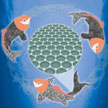 Among the various robotic actuation mechanisms driven by different stimuli, light-driven systems have garnered more and more attention due to their advantages in wireless/remote control, localized rather than whole-field driven capabilities, and electrical/mechanical decoupling. Inspired by the photothermal effect of graphene in biomedical applications, researchers have now demonstrated an easily fabricated and remote/wireless control light-driven approach to actuation mechanism based on graphene nanocomposites.
Among the various robotic actuation mechanisms driven by different stimuli, light-driven systems have garnered more and more attention due to their advantages in wireless/remote control, localized rather than whole-field driven capabilities, and electrical/mechanical decoupling. Inspired by the photothermal effect of graphene in biomedical applications, researchers have now demonstrated an easily fabricated and remote/wireless control light-driven approach to actuation mechanism based on graphene nanocomposites.
Oct 23rd, 2014
 Industrial production processes, by and large, rely on robotic assembly lines that place, package, and connect a variety of disparate components. While the manufacturing world is dominated by robots, there are applications where the established processes of serial 'pick and place' and manipulation of single objects reach scaling limits in terms of throughput, alignment precision, and the minimal component dimension they can handle effectively. By contrast, the emerging methods of engineered self-assembly are massively parallel and have the potential to overcome these scaling limitations.
Industrial production processes, by and large, rely on robotic assembly lines that place, package, and connect a variety of disparate components. While the manufacturing world is dominated by robots, there are applications where the established processes of serial 'pick and place' and manipulation of single objects reach scaling limits in terms of throughput, alignment precision, and the minimal component dimension they can handle effectively. By contrast, the emerging methods of engineered self-assembly are massively parallel and have the potential to overcome these scaling limitations.
Jul 10th, 2014
 A significant challenge in soft robotics involves fabricating soft sensors and actuators which, so far, have been very tedious to produce. Building soft sensors used by roboticists usually requires a multi-step, manual molding-lamination-sealing-infilling process. As a result, the design and fabrication process is cumbersome; the sensor form factors are unnecessarily limited; and there are issues with mechanical robustness. Now, though, researchers have demonstrated a new method for creating highly stretchable sensors based on embedded 3D printing of a carbon-based resistive ink within an elastomeric matrix.
A significant challenge in soft robotics involves fabricating soft sensors and actuators which, so far, have been very tedious to produce. Building soft sensors used by roboticists usually requires a multi-step, manual molding-lamination-sealing-infilling process. As a result, the design and fabrication process is cumbersome; the sensor form factors are unnecessarily limited; and there are issues with mechanical robustness. Now, though, researchers have demonstrated a new method for creating highly stretchable sensors based on embedded 3D printing of a carbon-based resistive ink within an elastomeric matrix.
Jun 24th, 2014
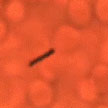 While nanotechnology researchers have made great progress over the past few years in developing self-propelled nano objects, these tiny devices still fall far short of what their natural counterparts' performance. Today, artificial nanomotors lack the sophisticated functionality of biomotors and are limited to a very narrow range of environments and fuels. In another step towards realizing the vision of tiny vessels roaming around in human blood vessels working as surgical nanorobots, researchers have now demonstrated, for the first time, externally driven nanomotors that move in undiluted human blood.
While nanotechnology researchers have made great progress over the past few years in developing self-propelled nano objects, these tiny devices still fall far short of what their natural counterparts' performance. Today, artificial nanomotors lack the sophisticated functionality of biomotors and are limited to a very narrow range of environments and fuels. In another step towards realizing the vision of tiny vessels roaming around in human blood vessels working as surgical nanorobots, researchers have now demonstrated, for the first time, externally driven nanomotors that move in undiluted human blood.
Apr 17th, 2014
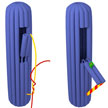 Not to be confused with the nanorobots of science fiction, for medical nanotechnology researchers a nanorobot, or nanobot, is a popular term for molecules with a unique property that enables them to be programmed to carry out a specific task. In what is the smallest 3D DNA origami box so far, researchers in Italy have now fabricated a nanorobot with a switchable flap that, when instructed with a freely defined molecular message, can perform a specifically programmed duty. Slightly larger nanocontainers with a controllable lid have already been demonstrated by others to be suitable for the delivery of drugs or molecular signals, but this new cylindrical nanobot has an innovative opening mechanism.
Not to be confused with the nanorobots of science fiction, for medical nanotechnology researchers a nanorobot, or nanobot, is a popular term for molecules with a unique property that enables them to be programmed to carry out a specific task. In what is the smallest 3D DNA origami box so far, researchers in Italy have now fabricated a nanorobot with a switchable flap that, when instructed with a freely defined molecular message, can perform a specifically programmed duty. Slightly larger nanocontainers with a controllable lid have already been demonstrated by others to be suitable for the delivery of drugs or molecular signals, but this new cylindrical nanobot has an innovative opening mechanism.
Apr 2nd, 2014
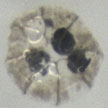 Advances in micro- and nanoscale engineering in the medical field have led to the development of various robotic designs that one day will allow a new level of minimally invasive medicine. These micro- and nanorobots will be able to reach a targeted area, provide treatments and therapies for a desired duration, measure the effects and, at the conclusion of the treatment, be removed or degrade without causing adverse effects. Ideally, all these tasks would be automated but they could also be performed under the direct supervision and control of an external user.
Advances in micro- and nanoscale engineering in the medical field have led to the development of various robotic designs that one day will allow a new level of minimally invasive medicine. These micro- and nanorobots will be able to reach a targeted area, provide treatments and therapies for a desired duration, measure the effects and, at the conclusion of the treatment, be removed or degrade without causing adverse effects. Ideally, all these tasks would be automated but they could also be performed under the direct supervision and control of an external user.
Nov 13th, 2013
 The Venus flytrap (Dionaea muscipula) is a carnivorous plant that catches and digests little insects. Its trapping mechanism consists of a series of tiny hairs at the crease where the plant's two leaves join. When a fly or spider walk across these hairs, touching two or more of them in succession, the two leaves will close quickly enough - within hundreds of milliseconds - to prevent its escape. Now, researchers have used it as inspiration for a new biomimetic robot made with artificial muscles. The device offers promise in the development of electrically stimulated artificial muscle that could be implanted in people to help overcome muscular disease or paralysis.
The Venus flytrap (Dionaea muscipula) is a carnivorous plant that catches and digests little insects. Its trapping mechanism consists of a series of tiny hairs at the crease where the plant's two leaves join. When a fly or spider walk across these hairs, touching two or more of them in succession, the two leaves will close quickly enough - within hundreds of milliseconds - to prevent its escape. Now, researchers have used it as inspiration for a new biomimetic robot made with artificial muscles. The device offers promise in the development of electrically stimulated artificial muscle that could be implanted in people to help overcome muscular disease or paralysis.
Mar 6th, 2012
 The complexity and high cost of the state-of-the-art high-resolution lithographic systems are prompting unconventional routes for nanoscale manufacturing. Inspired by natural nanomachines, synthetic nanorobots have recently demonstrated remarkable performance and functionality. Nanoengineers now have invented a new nano-patterning approach, named Nanomotor Lithography, which translates the autonomous movement trajectories of nanomotors, or nanorobots, into controlled surface features that brings a twist to conventional static optical fabrication systems.
The complexity and high cost of the state-of-the-art high-resolution lithographic systems are prompting unconventional routes for nanoscale manufacturing. Inspired by natural nanomachines, synthetic nanorobots have recently demonstrated remarkable performance and functionality. Nanoengineers now have invented a new nano-patterning approach, named Nanomotor Lithography, which translates the autonomous movement trajectories of nanomotors, or nanorobots, into controlled surface features that brings a twist to conventional static optical fabrication systems.
 Subscribe to our Nanotechnology Spotlight feed
Subscribe to our Nanotechnology Spotlight feed





